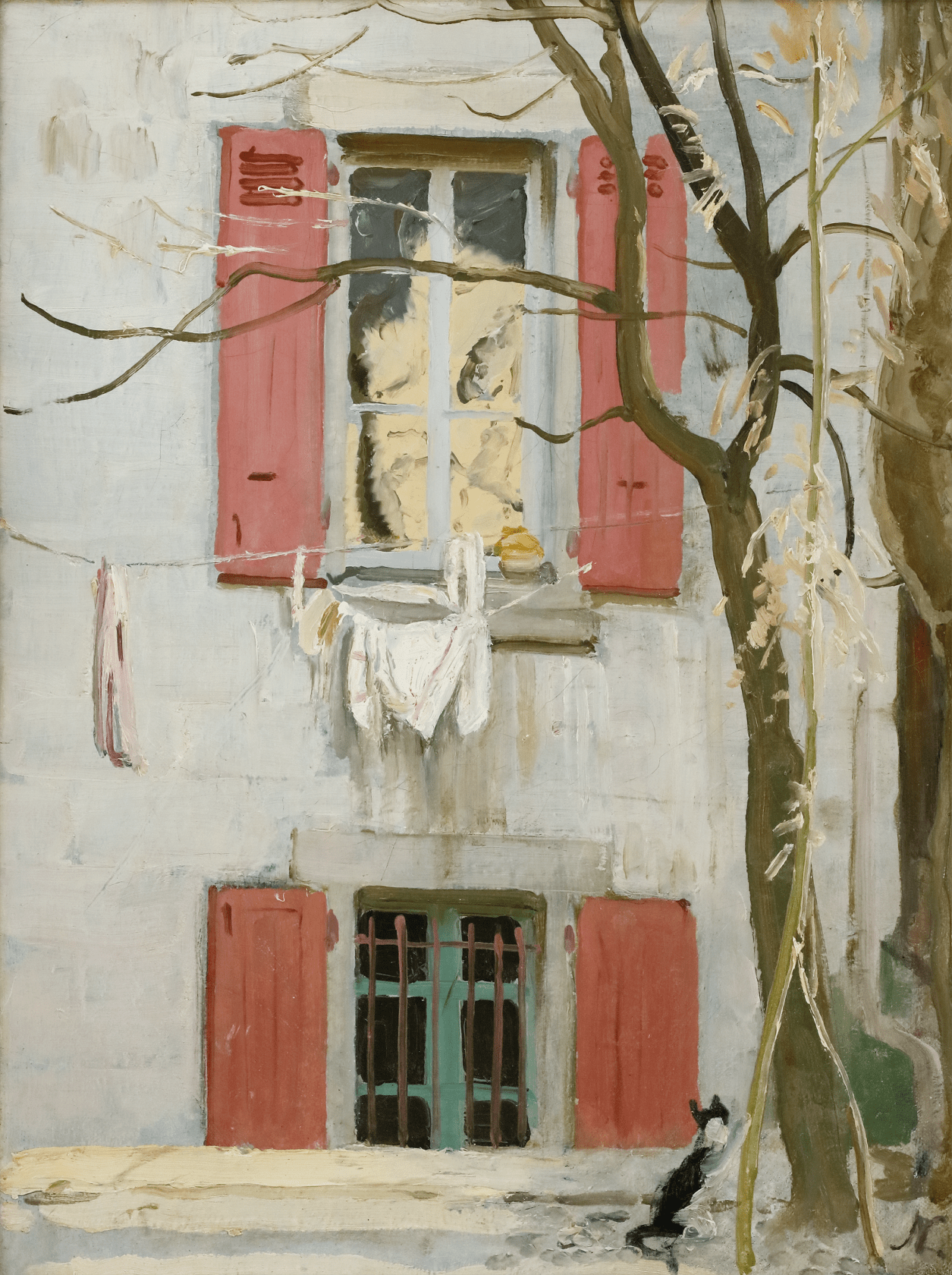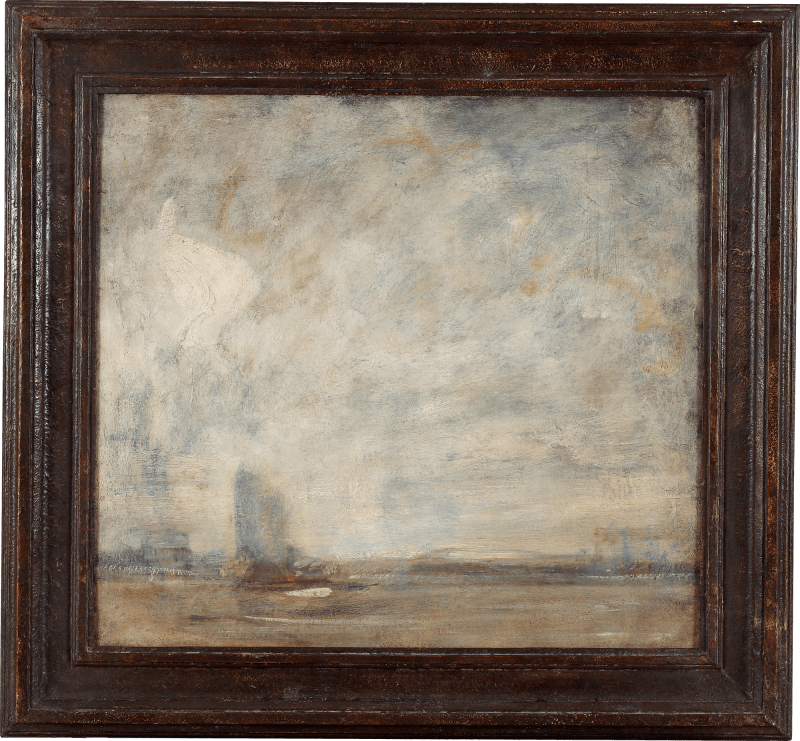In 1933, artist William Nicholson travelled to Seville on the invitation of his friend Ada Pringle and it is during this trip that the present canvas was painted.[1] The painting depicts a building with long vertical windows flanked by bright wooden shutters and demonstrates Nicholson’s famed virtuosity in his use of liquid impasto, as well as his intrepid mastery of reflection as evidenced in the pane of glass. A washing line stretches across the canvas, echoing the branches of the tree which recede slightly across the composition toward the building. The leafless tree and light shadows suggest that this painting was executed in the winter. In the foreground, close to the picture plane, sits a small black and white cat.
Nicholson continued to travel to Spain once a year from 1933 to 1936 but ceased travelling to Spain at the onset of the Civil War. Yet even after he stopped visiting Spain, the opportunities and experiences that Nicholson encountered there...
In 1933, artist William Nicholson travelled to Seville on the invitation of his friend Ada Pringle and it is during this trip that the present canvas was painted.[1] The painting depicts a building with long vertical windows flanked by bright wooden shutters and demonstrates Nicholson’s famed virtuosity in his use of liquid impasto, as well as his intrepid mastery of reflection as evidenced in the pane of glass. A washing line stretches across the canvas, echoing the branches of the tree which recede slightly across the composition toward the building. The leafless tree and light shadows suggest that this painting was executed in the winter. In the foreground, close to the picture plane, sits a small black and white cat.
Nicholson continued to travel to Spain once a year from 1933 to 1936 but ceased travelling to Spain at the onset of the Civil War. Yet even after he stopped visiting Spain, the opportunities and experiences that Nicholson encountered there would remain with him for life; in part because it was here that he met the writer Marguerite Steen. Steen and Nicholson formed a life-long romance and companionship.
Much like his forbearers of the impressionist movement, Nicholson’s interests in architecture lay not solely in the grand geometric forms, but the changing effects of light upon these static structures. In many ways, Nicholson’s style harkens back to an earlier era of artists who inspired him, such as Edouard Manet and James Abbott McNeill Whistler, rather than the surge of contemporary artists engaged in modernism surrounding him. This painting is an excellent example of Nicholson’s ability to breathe life and humanity into an otherwise static subject; the washing on the line and open shutters serve as subtle reminders of the lives of the building’s inhabitants. Nicholson details and records these everyday architectural surroundings whilst alluding to the traces of human presence who enliven these spaces.
[1] Reed, P. (2011), William Nicholson: Catalogue Raisonné of the Oil Paintings, London & New Haven: Yale University Press, p.530.











